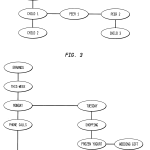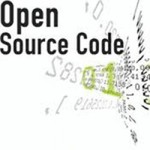On October 16, the Second Circuit issued its decision in Authors Guild v. Google, affirming Google’s fair use defense against Authors Guild’s claim of copyright infringement of the Google Books search engine.
Background
This is the latest chapter in a longstanding legal battle between the authors’ advocacy organization, Authors Guild, and Google. Litigation related to this case has extended for over ten years and has derived from multiple suits (see Google Books Litigation Family Three by Library Copyright Alliance). On September 20, 2005, three individual authors and the Authors Guild (collectively “Authors Guild”) filed a suit against Google for its actions related to its search engine Google Books. The company, in collaboration with the participant libraries, has made tens of millions of digital copies — that is, digital images and machine-readable versions — of books submitted by the libraries. In many cases, Google did so without the express consent of the copyright holders.
The search engine Google Books allows users to search any term, and, in response, the system provides a list of books that contain the searched term along with the number of times the term is mentioned (“Search” function). Furthermore, the Search function permits Internet users to search for statistical information “about the frequency of word and phrase usage over centuries” through text mining capabilities known as Ngram Viewer.
In addition, Google gives users free access to the part of these digital copies of books through a function known as Snippet View. This function allows users to see segments of a book page that contain the searched term. The view is restricted to display the same three snippets for a single term searched; to limit display of one snippet per page and one page every ten pages, called blacklisting; and to make permanently unavailable books where a single snippet may serve the user, such as with dictionaries and cookbooks.
One important precedent to this case was last year’s decision in Authors Guild v. HathiTrust. HathiTrust is an organization, now with more than 80 members, that the participant libraries of the Google Library Project formed to support the Project’s operations. In that case, the Second Circuit concluded that the actions of defendant HathiTrust – chiefly, that it allowed Google to make digital copies of the books submitted by its participant libraries for the purpose of full-text searches and limited display — were non-infringing uses under the fair use doctrine.
Fair Use
The Second Circuit’s analysis in Authors Guild v. Google case focused on reviewing the characteristics of Google Books’ allegedly infringing functions — Search and Snippet View – against the factors contained in Section 107 of the Copyright Act:
- “the purpose and character of the use, including whether such use is of a commercial nature or is for nonprofit educational purposes;
- the nature of the copyrighted work;
- the amount and substantiality of the portion used in relation to the copyrighted work as a whole; and
- the effect of the use upon the potential market for or value of the copyrighted work.”
This matter is part of the post-Campbell v. Acuff-Rose Music, Inc. case law and, therefore, reflects some of Campbell‘s contributions to the fair use doctrine. As Berkeley Law Professor Pamela Samuelson noted, the Supreme Court in Campbell emphasized (a) the “‘transformative’ nature of a defendant’s use as weighing in favor of fair use” and (b) the “importance of the public interest in access to works and information they may contain as meaningful considerations in fair use cases.” These themes ran throughout the Second Circuit’s decision in the Google Books litigation.
Decision
In its October 16 ruling, the Second Circuit affirmed the Southern District of New York’s grant of summary judgment for Google, holding that the company’s actions were permissible under the fair use doctrine.
With regard to the first factor, the Court, citing Campbell, addressed the question of whether or not the works “merely ‘supersede the objects’ of the original creation, . . . or instead add something new, with a further purpose . . . . [The first factor] asks, in other words, whether or not, and to what extent, the new work is ‘transformative.’” Reviewing each of Google Books’ functions individually, the Court initiated its analysis with the Search function. The Court sided with “Google’s claim [that the] transformative purpose for copying from works of others is to provide otherwise unavailable information about the original” books made available by the participant libraries.
The Court subsequently stated that the actions of Google in the context of the tool Ngrams View, which “allows readers to learn the frequency of usage of selected words in the aggregate corpus of published books in different historical periods,” was “the sort of transformative purpose described in Campbell as strongly favoring satisfaction of the first factor.”
One of the major differences between this case and HathiTrust, is that Google Books search engine has the Snippet View function open for the public, whereas in HathiTrust, the only user that had access to the digital images of the books were its libraries and eventually the disabled. The Court considered that displaying “the searcher [with] just enough context surrounding the searched term [served] to help her evaluate whether the book falls within the scope of her interest (without revealing so much as to threaten the author’s copyright interests).” The Court found that this functionality “adds importantly to the highly transformative purpose of identifying books of interest to the searcher.”
On the second factor, the Court stated that the “nature of the copyrighted work” was not dispositive. The Court explained that the secondary use of the books made by Google “transformatively provides valuable information about the original, rather than replicating protected expression in a manner that provides a meaningful substitute for the original.”
For the third factor, the question for the Court in relation to the Search function — as it was framed in HathiTrust — was “whether the copying used more of the copyrighted work than necessary and whether the copying was excessive.” The Court concluded that for the Search function, copying entire books was reasonable and furthermore necessary; if not, it “could not advise searchers reliably whether their searched term appears in a book (or how many times).”
In its application of the third factor to the Snippet View function, the Court held that for this function it had to be determined “the amount and substantiality of what is thereby made accessible to a public for which it may serve as a competing substitute.” In this matter, the Court based its reasoning on the findings of Authors Guild’s researchers, who “over a period of weeks” did “multiple word searches on Plaintiffs’ books . . . In no case were they able to access as much as 16% of the text, and the snippets collected were usually not sequential but scattered randomly throughout the book.” Therefore, the Court concluded, “It cannot be said that a revelation is ‘substantial’ in the sense intended by the statute’s third factor if the revelation is in a form that communicates little of the sense of the original.”
Regarding the fourth factor — “whether the copy brings to the marketplace a competing substitute for the original, or its derivative, so as to deprive the rights holder of significant revenues because of the likelihood that potential purchasers may opt to acquire the copy in preference to the original” — the Court took into consideration the limited access to the works, as stated above. Ultimately, the Second Circuit found that the functionalities of Google Books do “not serve as a substitute for the books that are being searched.”
Finally the Court held that Google’s “unauthorized digitizing of copyright-protected works, creation of a search functionality, and display of snippets from those works are non-infringing fair uses.”
Relevance and reactions
Professor Samuelson has characterized the decision of the Court as a “substantial boon for authors, especially scholarly ones” since “Google Book Search does precisely what the overwhelming majority of authors of books in research-library collections would want for their books: It rescues them from the obscurity of print collections and makes them more findable online.” Additionally, Samuelson has stated that the Court’s decision “establishes a precedent that provides a meaningful shield for individual scholars, as well as archives, libraries, and historical societies that serve scholarly research communities, when they undertake mass-digitization projects for similar purposes.”
Indeed, few other cases have explored the controversies generated by search engines’ functions and the third-party content that they index. (See Perfect 10, Inc. v. Amazon, Inc., Kelly v. Arriba Soft Corp. and A.V. v. iParadigms LLC).
The decision was well received by the American Library Association, whose president Sari Feldman stated that through this decision, “the assumption that maximum restriction in copyright is the path to maximum benefit which for too long has animated US copyright policies, laws and treaties has been soundly and rationally rejected.”
On the other side, the reactions of the Authors Guild came from Mary Rasenberger, its Executive Director, whose statement indicates this controversy is not yet over: “We trust that the Supreme Court will see fit to correct the Second Circuit’s reductive understanding of fair use, and to recognize Google’s seizure of property as a serious threat to writers and their livelihoods, one which will affect the depth, resilience and vitality of our intellectual culture.”



